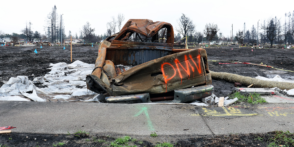Partners for the Journey
Jurisdictions find success working with third-party agents
Like education, clean water and healthcare, motor vehicle services are something that drivers and would-be motorists of North America have come to expect to be readily accessible in their communities. And with good reason. Eighty-five percent of Americans rely on cars to get to work — and only 9% of that total carpools. Motor vehicle services are critical to the economic engine of a region and the ability of its residents to earn money, receive medical care, become educated and provide for themselves.
To meet the challenge of providing timely, accessible motor vehicle services across the sprawling continent, jurisdictions rely on a network of field offices and third-party agents. Partnering with third parties has proven successful in some jurisdictions — especially those with disparate populations. But extending government operations to private industry is not without its challenges and requires a diligent commitment to high standards. Here, we highlight four jurisdictions that are modeling that commitment.
Alberta: A Unique Arrangement
Government of Alberta, Alberta Motor Association, Association of Alberta Registry Agents
In Canada, the Government of Alberta has taken a unique approach to providing driver services to customers in its jurisdiction. While most jurisdictions offer some combination of public and private options, in 1993, Alberta made the decision to exclusively offer services through third-party-operated registry agent offices.
“Alberta is the only jurisdiction in North America where public registry services are completely offered through a network of individually owned private agencies,” says Steve Murphy, director, Registries Administration and Accountability at Service Alberta. “There are 218 private registry agent locations where Albertans can access registry services. These registry agent locations vary in size, transactional volumes and number of employees.”
Registry agents offer a wide range of services on behalf of the Government of Alberta, including traditional motor vehicle services but also land title searches, corporate registry, personal property (lien) searches and registration and even healthcare registration.
What’s even more unique is how Alberta handles its relationship with the numerous registry agent offices located throughout the province. Alberta largely communicates issues through two organizations: the Alberta Motor Association (AMA) and the Association of Alberta Registry Agents (AARA).
Tailor-made Services
Having private agencies orchestrate these inquiries and transactions—and designated associations representing the best interests of the agencies—not only lets Alberta concentrate on other pressing matters, but also allows for fine-tuned detailing of what each individual community needs.
“Alberta is very geographically spread out,” says Rikki McBride, CEO of the Association of Alberta Registry Agents. Her organization represents 217 of the 218 registry agents across the province (all but AMA). “Our agents are in over 150 different communities throughout the province. So, the beauty of our situation is we have a huge variance in the type of community that we serve in the province.”
For example, she says customers in the more rural areas of Alberta may have significantly different needs when compared to urban Albertans. Customizing the services offered for each community leads to increased efficiency and lower costs for both the government and customers.
While AARA represents registry agents offering the previously mentioned services, AMA takes things a step further. Jeff Kasbrick, vice president of government and stakeholder relations at the Alberta Motor Association, explains that his organization is the Canadian equivalent of the American Automobile Association (AAA). “Our registry operations are co-located with all of our other business operations at AMA, which includes a travel agency, an insurer and a variety of other member services, including retail items, prepaid gift cards and things of that nature.” He likens AMA to a “one-stop shop” for customers and their various needs, adding yet another form of convenience for residents of the province.
Accountability is Key
Before entering into agreements with registry agents, Alberta vets each private business it is considering partnering with. “When new registry agent opportunities are identified, the Government of Alberta issues a public request for proposals [RFP], and as a component of the RFP, a copy of the contract the successful proponent would be required to sign is included,” Murphy says.
Registry agent contracts do not have a specific end date and can be sold, although all sales must be approved by the province. The approval process involves background and financial checks as well as approval of location and premises if a relocation will occur. Any adjustments to contracts are facilitated through the registry associations. “Contracts are typically reviewed when change is needed,” McBride says. “This could be identified either by our association via member feedback or by the government, or it may be a change to a specific program where there is a need to incorporate new language into existing contracts.”
What’s also important is how Alberta determines whether each registry agent is pulling its weight and honoring its agreement. “Alberta has a robust performance-monitoring- and-auditing program guided by a data-driven accountability framework, which encompasses performance monitoring, measurement, management and enforcement,” Murphy explains.
Every quarter, agents are issued performance reports based on baselines for satisfactory performance. “Every month, our consolidated agent reporting system calculates a performance score for each agent based on issue severity and the number of issues found,” Murphy says. “A quarterly score is created based on the average of the monthly scores, a network average is then calculated, and individual agent scores are plotted on a bell curve in comparison to the network average. Standard deviation is used to establish the baseline for satisfactory performance.”
Outside of specific contract requirements, Kasbrick says his organization consistently reviews its own performance, as well. “We’re guided by a whole suite of policies that outline greater specificity as to what is actually required of our registry agents, or how it is that we operate our daily interactions that we have with the provincial government. These are pieces that are regularly reviewed and discussed in collaboration and in partnership with the government.”
Murphy notes that a corresponding sanction model is used to manage registry agent behavior and performance—at both an individual and contract level—if performance slips or responsibilities aren’t handled properly. “The model classifies breaches and administers consistent, repeatable and progressive sanctions to correct agent behavior in alignment with the Government of Alberta requirements for satisfactory performance.”
Satisfaction Guaranteed
The extensive measures taken by the Government of Alberta to ensure top-notch partnerships help provide impeccable service to Albertans. Customers are clearly happy with how the jurisdiction is running its registry services. “We did a public survey a few years back, and satisfaction with registry services was extremely high,” McBride says. “Services are delivered quite efficiently—we have short lines and long open hours thanks in part to the agencies being operated privately.”
Kasbrick says customer satisfaction is high because of how smoothly the partnership runs between the government and his and McBride’s associations. “I would define it, actually, as a very extraordinary, special and unique relationship,” he says. “We have the shared goal of improving the experience for our public—and that’s what I think is most critical.”
Arizona: Cooperative, Continuous Improvement
Arizona Department of Transportation, Motor Vehicle Division, Ginger’s Auto Title Services
For just under three decades, authorized third parties (ATPs) have been supporting the Arizona Department of Transportation (ADOT) in the provision of services, including title, registration and driver license transactions. Created by statute in 1993, today the Third Party Program comprises more than 100 companies in more than 180 locations across the state.
ATPs function like an extension of the Motor Vehicle Division (MVD) — operating with direct access to the ADOT/MVD title, registration and driver license databases. During the height of the pandemic, in the last quarter of 2020, ATPs completed nearly one million motor vehicle-related transactions — four times that of ADOT field offices. While these volumes are one way to measure the substantial service ATPs provide, two other unique qualities of the Third Party Program help evaluate and optimize third-party services.
Annual Review and Renewal
The first way ADOT’s program is unique is that agreements authorizing third parties to provide MVD services are renewed on an annual basis. Robert J. Smith, ADOT MVD administrator, has been responsible for all authorized agent operations for the department for the last 15 years and says the renewal process offers a valuable opportunity for performance review and reassessment.
“A notice goes out to the third party two to three months prior to the agreement expiration, and it’s potentially an opportunity to identify a third party that, perhaps, is not producing to our expectations for various reasons,” Smith says.
Smith and the MVD consider a variety of factors when evaluating new and existing ATPs. “We look at the anticipated transaction fees and the minimum transactions they expect will come through their door. We look at the region they’re operating in, and we evaluate saturation or the dire need,” Smith says.
A Perfect Partner
Those factors are part of the equation that has made Sierra Vista, Arizona-based Ginger’s Auto Title Services a successful authorized third party. Located 200 miles southeast of Phoenix, Sierra Vista is a rural community of just over 43,000 located adjacent to the U.S. Army’s Fort Huachuca.
“We recognized that our field office could potentially be challenged by the growth in Sierra Vista,” Smith says. “We extend our customer service to the public through private entities, and in 1999, we recognized a perfect opportunity with the transaction population that Ginger’s had at the time. They were a perfect candidate.”
Forging Best Practices
The second unique component of the Third Party Program is the cooperative development of best practices. Authorized third parties have their own association in Arizona, which meets with ADOT monthly to discuss process and opportunities for expansion of services. In April 2020, ADOT upgraded its computer system, a massive overhaul that replaced elements of its 35-year-old platform.
“I think it’s imperative industry is involved, and many of them have processes in place that we can learn from,” Smith says.
“The state has really done a wonderful job of allowing us to put our opinions, ideas and suggestions out there,” says Jennifer Morris, owner-operator of Ginger’s Auto Title Service. “A lot of great changes have been implemented, and we’ve done really well in just over a year.”
ADOT plans to select 15 ATPs to demonstrate their quality assurance practices, and by July 2021, it intends to publish its quality assurance best practices.
In a Pandemic Pinch
When the COVID-19 pandemic began last spring, many governmental agencies temporarily shut down as safety measures and virtual protocols were developed. The transaction capacity of ADOT’s field offices was destabilized.
“We saw third-party transactions spike 40% to 50% during the pandemic,” Smith adds. “Third parties drove the industry for a period of time when government was shaky.”
Morris says the demand for services surged during the pandemic, requiring her to hire one additional full-time employee and one part-time employee.
“We put a lot of measures in place. We only allow a certain amount of people in at a time, but we put chairs outside. Every day, I bought popsicles, I bought water, I worked the line,” Morris says. “I would stand outside, talk to everybody and make sure they had everything they needed. It was quite a challenge at [the start of the pandemic], but it’s actually bettered us as an office. We didn’t lose the customer base because of these challenges. I think they’ve appreciated us going the extra mile.”
Minnesota: Public and Private Options
Minnesota Department of Public Safety, Driver and Vehicle Services Division, Blue Earth County Deputy Registrar
Minnesota operates on a model that allows vehicle services to be offered by both government entities and private enterprise. It provides some services through its Department of Public Safety, Driver and Vehicle Services Division (DPS-DVS), like examination stations. However, the jurisdiction reserves all motor vehicle services, such as vehicle registration and titling, for deputy registrar offices. DPS-DVS does not offer these services at any of the state-run facilities, so the only other way Minnesotans can access certain vehicle services is online through DPS-DVS. The goal of this system is to ensure there are easily accessible service options for all Minnesotans, conveniently located in their own communities.
“The commissioner of the Minnesota DPS is the state registrar and has the authority to appoint deputy registrars,” says Emma Corrie, driver and vehicle services director at the Minnesota Department of Public Safety. “DPS offers the opportunity to establish a deputy registrar office to the auditor of the county where the office will be located. If the county declines, DPS offers the opportunity to the city in which the office is located. If both decline, DPS can post a public notice, and both individuals and privately owned businesses may apply for the appointment.”
One example of a deputy registrar office that has formed a great relationship with DPS-DVS is the Blue Earth County Deputy Registrar. With its current appointment dating back to 1995, and having been first established in 1970, its partnership with the Minnesota government has been successful for many years.
Suzanne Jensen, license center administrator at the Blue Earth County Deputy Registrar, describes the vast services offered by her county and other offices across Minnesota, which extend beyond traditional vehicle services: “We provide the citizens of Minnesota with car registration, title transfers and driver’s license credentials. Some offices do DNR [Department of Natural Resources] transactions as well, which are for boats, snowmobiles and ATVs. They also might do game and fish licenses, and some offices even do vital statistics—which our office does—where we provide birth certificates, marriage certificates, death certificates and ministerial credentials.”
Jensen worked at a deputy registrar office in Brown County, Minnesota, before joining Blue Earth County, and she says her previous office even provided liquor and tobacco licenses to local businesses.
Adding Partners
It’s clear that the Minnesota DPS-DVS entrusts its deputy registrars with a wide variety of tasks to better serve customers in the jurisdiction. In order to ensure that its partners are vetted properly, Minnesota performs ample fact-finding missions before commissioning a new office. This includes background checks, a look at related experience and the ability to procure an insurance bond. Corrie states that DPS-DVS also looks at how a new deputy registrar would affect the community, including:
- The needs of the community, including if the proposed location would be convenient.
- The proposed office’s accessibility to the public.
- The proposed office’s proximity to other office locations.
- Jurisdiction costs associated with deputy registrar audits, support and training.
In terms of legal agreements, deputy registrars are required to sign a contract with the state that outlines their duties and responsibilities. Contracts are amended when there is a change to who is operating a deputy registrar office or if new terms or services need to be added. All deputy registrars, including Blue Earth County, were recently required to sign updated agreements with DPS-DVS.
Preparing a New System
Having trusted and reliable partners goes a long way toward the success of programs and customer satisfaction—maybe most evident in the rollout of Minnesota’s aforementioned vehicle services system, MNDRIVE, which went live to the public in November 2020.
Administering training to deputy registrar employees was one of the biggest challenges of implementing the system. Training was supposed to take place during the summer, in person, but restrictions and complications stemming from the pandemic caused some issues for administrators and front-line personnel. “Finding time to have employees safely pulled from the counters to do the training was the biggest challenge,” Jensen says.
Corrie says DPS-DVS had to move all of the jurisdiction’s training online to respond to the circumstances. “We shifted training online and successfully trained deputy registrars and their staff through webinars. We continue to listen to feedback and look for innovative ways to present timely training for deputy registrars and their staff,” she says.
The proactivity in solving potential issues and delivering clear and concise advice to the deputy registrar offices allowed for the implementation of MNDRIVE to be a huge success. Once training was complete and employees were up to speed, Jensen says employees were 100% onboard. “My staff at the counter say they love it.”
Customers First
At the end of the day, customer satisfaction is what truly drives all working relationships between jurisdictions and third-party partners. Corrie is grateful to have such a great relationship with deputy registrars across Minnesota. “I view deputy registrars as an extension of our DPS-DVS team, providing essential driver and vehicle services throughout the jurisdiction. They help bring important services to communities where DPS-DVS does not have exam stations. It’s really important for us to have accessible, convenient locations for our customers,” she says.
Jensen agrees: “Our end goal is great customer service, and that’s always been my focus. I think it just pays off to have happy taxpayers and happy citizens, giving them what they deserve.”
Wisconsin: Looking to Expand
Wisconsin Department of Transportation, Opus
While there’s no such thing as a perfect partnership, there are some that just seem to work. When we find a partnership like this, we tend to hold onto them—as is the case with Wisconsin Department of Transportation (WisDOT) and Opus.
WisDOT and Opus have been working together for about eight years since Opus won a competitive bid that WisDOT requested for emissions services. Along with providing emissions services through its Opus Inspection division, Opus also provides registration renewals through its Opus VTR division. “That came as a bonus,” says Michael Domke, section chief, Dealer and Agent Section, WisDOT Bureau of Vehicle Services.
Partnering with various car dealerships and garages, Opus is able to do emissions and registration all in one place. Opus VTR President Chris Smith says they see about 250,000 registration renewals per year, with that number holding steady. “I think customers like the convenience of getting these services done at one time,” he says.
Because vendors like Opus partner with outside agents like dealerships, contracts work in a trinity format, where WisDOT contracts with vendors and agents, and vendors also contract with the agents, Domke notes.
“We recently overhauled our contracts because, as they were originally written, there were some equipment requirements that no longer exist because these are all web-based programs,” he adds. “Now, there’s a heavy focus on data security to make sure vendors understand the appropriate use of DOT data, how it can be accessed and penalties for breaching that.”
An Expanding Market
Implementing the emissions and registration services eight years ago went relatively smoothly, with no significant challenges at the time, Smith recalls. However, in 2015, WisDOT opened its market to new vendors to limit vendor monopolies and give customers more options. This change also came with an update to WisDOT’s system. These new partnerships and updates have presented various challenges.
“The update was done by a different vendor, so Opus had to update our systems and processes, as well,” Smith says. “Working with another vendor adds another layer [of challenges].”
Domke says WisDOT is holding kickoff meetings with new vendors nearly every three months, and while adding new vendors is complicated, it is also expanding services and providing more for customers, stakeholders and WisDOT itself.
“Outsourcing these services has allowed us to get our internal work product out the door faster and create more streamlined processes for what we’re doing,” he says. “That has been no more applicable than during the [pandemic], when all of our DMV service centers closed [due to COVID]. Customers can access titling and registration services through third parties instead of everything having to be mailed in. That definitely helps us.”
Stakeholders are also seeing increased revenue by offering these services, Domke adds. “They’re using it as a mechanism to get customers into their stores. Maybe it’s a gas station or grocery store, and they’re hoping that while customers are in their stores, they buy something else.”
Looking Toward the Future
As WisDOT continues to grow its market, it is looking forward to its continued partnership with Opus, which will expand to include titling services this year. Smith says Opus is also excited about this new project because working with WisDOT has historically been a great experience.
“Michael and his staff are fantastic,” he says. “In the past, they have always been knowledgeable. They know what they’re talking about and they follow through. We’re excited about the new project and already have some developers ready to roll.”
Providing Direction for Future Challenges
Relationships of any kind require work, and the public-private partnerships that these jurisdictions have forged are a testament to that. Their experiences have produced the lessons and learnings that will inform best practices throughout North America, but the work of optimization is never complete. There will always be a new technology, new services or an unexpected crisis, but like the challenges before them, these partnerships will continue to evolve in kind.
Learn about AAMVA’s new best practices guide for administering third-party agents.




